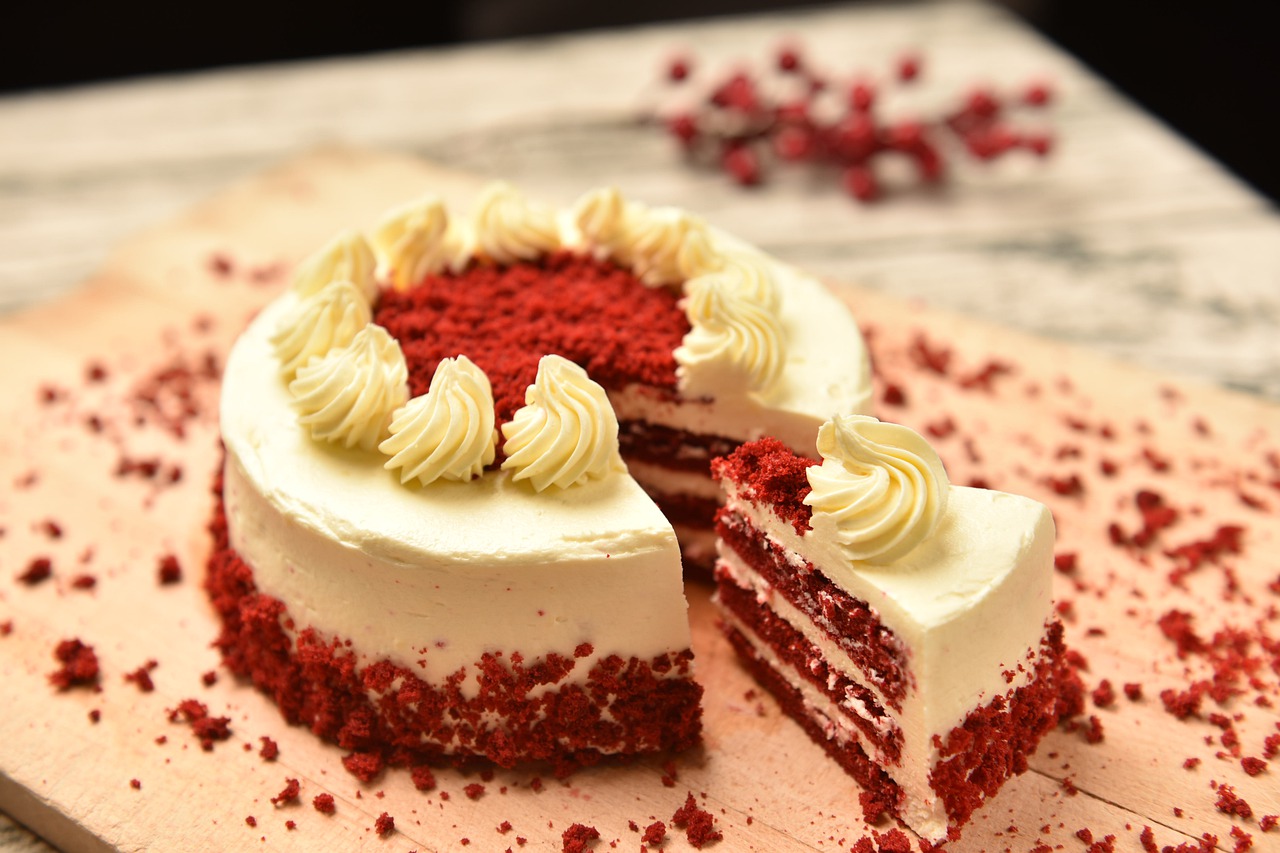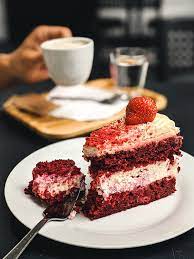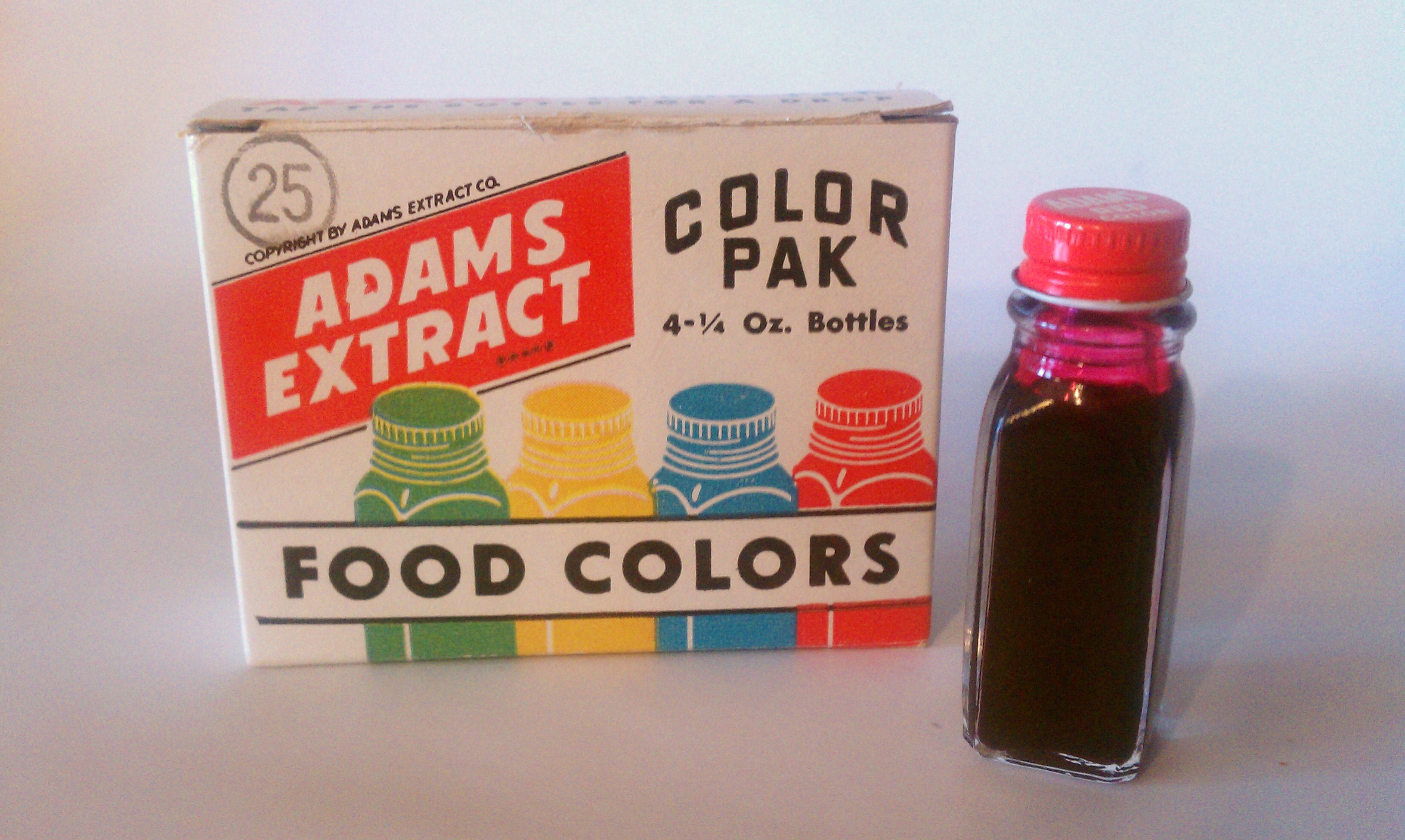Red Velvet Cake Has a Surprising History!
With Valentine’s Day right around the corner, I thought a nice red velvet cake with cream cheese frosting would be just the ticket! I recently bought my first bundt cake pan and I really want to make a festive red velvet bundt cake for Valentine’s Day. In my search to find the perfect recipe, I discovered that red velvet cake is a dessert with a very intriguing history. So before we dive into the recipe, let’s get into a little red velvet cake history.

History of Red Velvet Cake
As is the case with almost any popular food, the origin story has a few different people who claim to be the originators and it can be hard to siphon through the contenders to find the real originator. The same goes for red velvet cakes. You might be wondering--is it from the South or New York City? Is it colored by beet juice or red food coloring? Wait a minute……it is actually chocolate cake?! All of these things have some truth to them.

In actuality, the cake originated before it ever got the bright scarlet red you have become accustomed to in modern times. The “red” tinge was actually derived from a chemical reaction, which we will get into in just a moment. “Velvet” cakes originated in Victorian times in England and were called velvet cakes because of their soft texture and fine crumb. At the time, they of course didn’t have the machines we do now that can grind flour into such a fine mill so they often used flour that was quite grainy. If anyone was getting a piece of “velvet” cake, they knew that the texture would be extra soft, fluffy and velvety because there was a chemical reaction that occurred between the alkaline cocoa and acidic buttermilk that broke down the flour to a softer, finer texture.
This same chemical reaction caused by the chocolate and buttermilk brought out compounds in the chocolate called “anthocyanins”, which are red in color and are the compounds that give raspberries, rhubarb and roses their red color. This would cause the cake to come out an auburn or mahogany hue--hence the name “red velvet cake”. There is also another theory which states it might be called red velvet cake since the recipe calls for brown sugar, which used to be referred to as “red sugar”, hence the cake being called “red velvet cake”.
They relied on this chemical reaction to give the cake the red hue for a couple hundred years and then when WWII hit and ingredients were scarce, they used beet juice to give it even more red color. However, people thought it tasted like beets.

In the 1930’s a wealthy gentleman from Texas who happened to own a company called Adams Extract, the company that sold the first artificial food coloring for home use, visited the Waldorf-Astoria in New York City. They had red velvet cake on the menu, but of course it was only a mild red color with the beet juice. Mr. Adam showed them his schnazzy new product and they replaced the beet juice with his red food coloring to get the bright red cake we are used to these days. The rest is history.

It became more and more popular as the decades went on and really got some steam when featured on the Julia Roberts’ movie Steel Magnolias, with the infamous gray armadillo groom’s cake filled with red velvet cake. It took America by storm again and people were making them for every occasion, especially in the South.
Nowadays, you’d be hard pressed to find a “red velvet cake” that isn’t the bright red hue we know it as today. I was checking out recipes and the vast majority typically call for 1 whole ounce of red food coloring (a whole little bottle!). I don’t know about you but this gives me the willies a little bit to think about my body trying to digest all that mysterious red dye, so I was checking out some very old red velvet cake recipes. Just know that if you use these (or opt to omit the food dye in any other recipe), it will give your cake a mahogany hue--it will not, of course, be the bright red hue you are accustomed to, but it should be a delicious velvety cake nonetheless. And don’t forget this one key tip to make sure it turns out successfully--remember to get natural cocoa powder, not “Dutch processed” or “extra dark” cocoa powder, as these kinds of cocoa powder are more alkalized and won’t react with the buttermilk to give it the reddish color you are hoping for.
If you really wanted to use an original recipe, you’d go for “ermine frosting”, which is a boiled milk/flour based white fluffy frosting that some readers mentioned tastes more like the fluffy filling inside a Tiwnkie. I think as I make my red velvet bundt cake for Valentine’s Day this year, I am going to go a bit more modern and do a cream cheese frosting because I can’t get enough of that tang! It’s too good to pass up on, but you can certainly go all the way vintage on this recipe if you’d like and make the bright white ermine frosting.
Are you a fan of red velvet cakes? Are you planning on making any special desserts this Valentine’s Day? If so, what are you making? Please share your thoughts in the comments below.
Here is a recipe for a red velvet bundt cake from Chowhound that has just two teaspoons of the red food coloring to give it a blush of red color. I plan to make this recipe for my family for Valentine’s Day this year :)
cooking spray
3 tablespoons natural unsweetened cocoa powder, sifted
1/3 cup boiling water
1 cup buttermilk
3/4 cup (1 1/2 sticks) unsalted butter, at room temperature
1 1/2 cups granulated sugar
3 large eggs
2 teaspoons red gel food coloring (optional)
2 teaspoons pure vanilla extract
1/2 teaspoon fine salt
2 1/2 cups all-purpose flour
1 1/2 teaspoons baking soda
1 teaspoon distilled white vinegar
1 pound cream cheese, at room temperature
1/2 cup (1 stick) unsalted butter, at room temperature
1 tablespoon pure vanilla extract
2 cups powdered sugar, sifted
Pinch of fine salt
1/2 cup chopped toasted pecans (optional)
Directions:
Add Recipe to Cook'n
blog comments powered by Disqus

History of Red Velvet Cake
As is the case with almost any popular food, the origin story has a few different people who claim to be the originators and it can be hard to siphon through the contenders to find the real originator. The same goes for red velvet cakes. You might be wondering--is it from the South or New York City? Is it colored by beet juice or red food coloring? Wait a minute……it is actually chocolate cake?! All of these things have some truth to them.

In actuality, the cake originated before it ever got the bright scarlet red you have become accustomed to in modern times. The “red” tinge was actually derived from a chemical reaction, which we will get into in just a moment. “Velvet” cakes originated in Victorian times in England and were called velvet cakes because of their soft texture and fine crumb. At the time, they of course didn’t have the machines we do now that can grind flour into such a fine mill so they often used flour that was quite grainy. If anyone was getting a piece of “velvet” cake, they knew that the texture would be extra soft, fluffy and velvety because there was a chemical reaction that occurred between the alkaline cocoa and acidic buttermilk that broke down the flour to a softer, finer texture.
This same chemical reaction caused by the chocolate and buttermilk brought out compounds in the chocolate called “anthocyanins”, which are red in color and are the compounds that give raspberries, rhubarb and roses their red color. This would cause the cake to come out an auburn or mahogany hue--hence the name “red velvet cake”. There is also another theory which states it might be called red velvet cake since the recipe calls for brown sugar, which used to be referred to as “red sugar”, hence the cake being called “red velvet cake”.
They relied on this chemical reaction to give the cake the red hue for a couple hundred years and then when WWII hit and ingredients were scarce, they used beet juice to give it even more red color. However, people thought it tasted like beets.

In the 1930’s a wealthy gentleman from Texas who happened to own a company called Adams Extract, the company that sold the first artificial food coloring for home use, visited the Waldorf-Astoria in New York City. They had red velvet cake on the menu, but of course it was only a mild red color with the beet juice. Mr. Adam showed them his schnazzy new product and they replaced the beet juice with his red food coloring to get the bright red cake we are used to these days. The rest is history.

It became more and more popular as the decades went on and really got some steam when featured on the Julia Roberts’ movie Steel Magnolias, with the infamous gray armadillo groom’s cake filled with red velvet cake. It took America by storm again and people were making them for every occasion, especially in the South.
Nowadays, you’d be hard pressed to find a “red velvet cake” that isn’t the bright red hue we know it as today. I was checking out recipes and the vast majority typically call for 1 whole ounce of red food coloring (a whole little bottle!). I don’t know about you but this gives me the willies a little bit to think about my body trying to digest all that mysterious red dye, so I was checking out some very old red velvet cake recipes. Just know that if you use these (or opt to omit the food dye in any other recipe), it will give your cake a mahogany hue--it will not, of course, be the bright red hue you are accustomed to, but it should be a delicious velvety cake nonetheless. And don’t forget this one key tip to make sure it turns out successfully--remember to get natural cocoa powder, not “Dutch processed” or “extra dark” cocoa powder, as these kinds of cocoa powder are more alkalized and won’t react with the buttermilk to give it the reddish color you are hoping for.
If you really wanted to use an original recipe, you’d go for “ermine frosting”, which is a boiled milk/flour based white fluffy frosting that some readers mentioned tastes more like the fluffy filling inside a Tiwnkie. I think as I make my red velvet bundt cake for Valentine’s Day this year, I am going to go a bit more modern and do a cream cheese frosting because I can’t get enough of that tang! It’s too good to pass up on, but you can certainly go all the way vintage on this recipe if you’d like and make the bright white ermine frosting.
Are you a fan of red velvet cakes? Are you planning on making any special desserts this Valentine’s Day? If so, what are you making? Please share your thoughts in the comments below.
Here is a recipe for a red velvet bundt cake from Chowhound that has just two teaspoons of the red food coloring to give it a blush of red color. I plan to make this recipe for my family for Valentine’s Day this year :)
Red Velvet Bundt Cake With Cream Cheese Frosting
A moist red velvet Bundt cake recipe with cream cheese frosting. If you like, sprinkle the top with chopped toasted pecans. Author: Kim Laidlaw
Serving size: 10
Calories per serving: 783
Ingredients:
Calories per serving: 783
cooking spray
3 tablespoons natural unsweetened cocoa powder, sifted
1/3 cup boiling water
1 cup buttermilk
3/4 cup (1 1/2 sticks) unsalted butter, at room temperature
1 1/2 cups granulated sugar
3 large eggs
2 teaspoons red gel food coloring (optional)
2 teaspoons pure vanilla extract
1/2 teaspoon fine salt
2 1/2 cups all-purpose flour
1 1/2 teaspoons baking soda
1 teaspoon distilled white vinegar
1 pound cream cheese, at room temperature
1/2 cup (1 stick) unsalted butter, at room temperature
1 tablespoon pure vanilla extract
2 cups powdered sugar, sifted
Pinch of fine salt
1/2 cup chopped toasted pecans (optional)
Directions:
1. Heat the oven to 350°F and arrange a rack in the middle. Generously coat a 10-cup Bundt pan with cooking spray.
2. To make the cake, sift the cocoa into a bowl and pour the boiling water over it. Whisk to combine, then whisk in the buttermilk. In the bowl of a stand mixer fitted with the paddle attachment, beat the butter and sugar on medium-high speed until creamy, about 3 minutes. Add the eggs 1 at a time, beating well after each addition. Stir in the food coloring, vanilla, and salt. Reduce the mixer’s speed to medium-low and carefully add a third of the flour, followed by half the buttermilk. Repeat, then turn off the mixer and scrape down the sides. Add the final third of flour and mix until just combined. In a small bowl, stir together the baking soda and vinegar, then quickly stir this mixture into the batter.
3. Scrape the batter into the prepared Bundt pan and smooth the top. Bake until puffed and a toothpick inserted into the center comes out clean, about 40 minutes. Cool the cake in the pan on a wire rack for about 15 minutes, then unmold the cake directly onto the rack and cool completely.
4. Meanwhile, make the frosting. In the bowl of a stand mixer fitted with the paddle attachment, beat the cream cheese, butter, and vanilla on medium-high speed until smooth and fluffy, about 3 minutes. Gradually beat in the powdered sugar and salt and continue to mix until thoroughly combined, scraping down the sides of the bowl as needed.
5. To finish, slide the cake onto a serving platter. Spread the top (and sides, if you like) with the frosting and sprinkle with the pecans, if using.
2. To make the cake, sift the cocoa into a bowl and pour the boiling water over it. Whisk to combine, then whisk in the buttermilk. In the bowl of a stand mixer fitted with the paddle attachment, beat the butter and sugar on medium-high speed until creamy, about 3 minutes. Add the eggs 1 at a time, beating well after each addition. Stir in the food coloring, vanilla, and salt. Reduce the mixer’s speed to medium-low and carefully add a third of the flour, followed by half the buttermilk. Repeat, then turn off the mixer and scrape down the sides. Add the final third of flour and mix until just combined. In a small bowl, stir together the baking soda and vinegar, then quickly stir this mixture into the batter.
3. Scrape the batter into the prepared Bundt pan and smooth the top. Bake until puffed and a toothpick inserted into the center comes out clean, about 40 minutes. Cool the cake in the pan on a wire rack for about 15 minutes, then unmold the cake directly onto the rack and cool completely.
4. Meanwhile, make the frosting. In the bowl of a stand mixer fitted with the paddle attachment, beat the cream cheese, butter, and vanilla on medium-high speed until smooth and fluffy, about 3 minutes. Gradually beat in the powdered sugar and salt and continue to mix until thoroughly combined, scraping down the sides of the bowl as needed.
5. To finish, slide the cake onto a serving platter. Spread the top (and sides, if you like) with the frosting and sprinkle with the pecans, if using.
Recipe formatted with the Cook'n Recipe Software from DVO Enterprises.
Sources:
- www.pxhere.com
- www.pixabay.com
- www.allrecipes.com
- www.chowhound.com
- www.greatist.com
- www.wikipedia.org
- www.benstarr.com
 Mary Richardson
Mary Richardson
Weekly Newsletter Contributor since 2014
Email the author! mary@dvo.com
